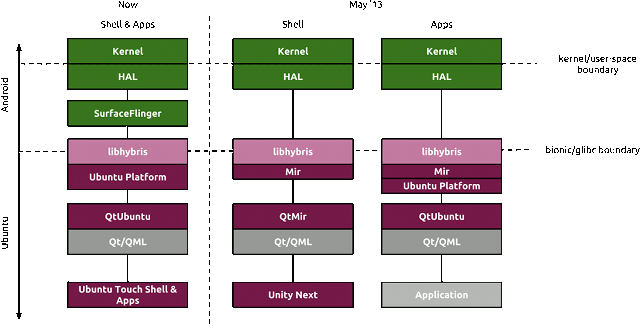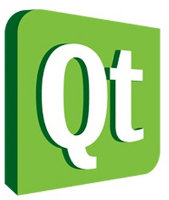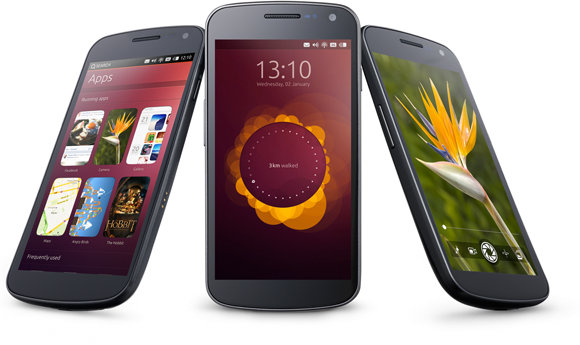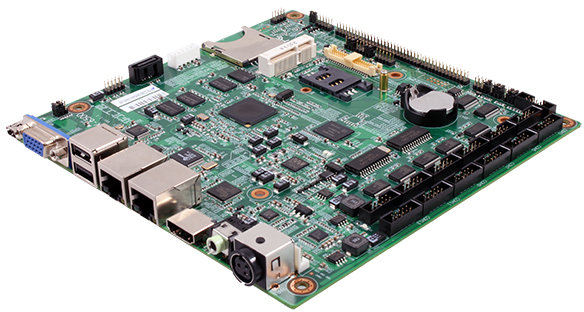The X server is getting old, and many developers complain it’s not an optimal solution anymore due to its (over) complexity, which was why Wayland was developed. However, it turns out Ubuntu will not use Wayland, but instead their own display server called Mir which will be used in all form factors from phones to desktops. Phoronix has provided a quick summary about the key aspects of Mir: Mir is a new display server being developed at Canonical and it is not based on X.Org or Wayland. Android graphics drivers will be supported. Existing DRM/KMS/Mesa/GBM (the open-source Linux graphics drivers) will work. Canonical is pressuring the binary blob vendors to make their drivers compatible. There will be support for legacy X11 applications through an integrated root-less X.Org Server. Canonical will natively support GTK3 and Qt/QML toolkits with Mir. Mir will be used for all form factors from Ubuntu Phones to […]
Sailfish OS SDK Alpha Release Is Now Available for Linux
Sailfish OS is a new mobile operating system based on the Qt platform that will soon end-up in mobile phone near you. Until now it was possible to build the SDK yourself, but it was pretty challenging since the documentation was lacking, as Jolla, the company behind Sailfish OS, focused on development. The good news is that you don’t need to build the SDK yourself anymore, since Jolla has just released Sailfish SDK Alpha for Linux 32-bit & 64-bit, and Windows & Mac OS versions will come later. You’ll need a computer that meet the following requirements: A host machine running a Linux operating system Oracle’s VirtualBox version 4.1.18 or higher pre-installed on the host machine. About 5GB of free disk space 4GB of RAM or more is recommended You can get started in two steps: Install the SDK – Download the 32 bit or 64 bit Linux installer. (~650 […]
Qt on Embedded Systems – ELCE 2012
Lars Knoll, chief maintainer for the Qt Project, gives a presentation about Qt on embedded systems, including a demo with the Raspberry Pi at the Embedded Linux Conference Europe 2012 in Barcelona, Spain. Abstract: For well over 10 years, Qt has been used in many types of embedded devices, ranging from high-end medical systems, through mobile phones and smartphones, all the way to simple devices like coffee makers. This presentation will show some of the work that has been put in Qt throughout the years to support embedded devices, some of the challenges that the development team faced in order to bring a fully-featured desktop toolkit to resource-limited devices, along with solutions they came up with. Time permitting, the presenter will also show Qt demos running on an embedded device. This session is intended for embedded application developers looking to make use of the capabilities of recent hardware, as well […]
Canonical Announces Ubuntu for Phones
Canonical has just announced the Ubuntu for Phones platform that will allows users to have similar experience on desktops (Ubuntu Desktop), TVs (Ubuntu TV) and smartphones, avoiding the need to learn 2 different platform for the desktop and mobile devices. The user interface replaces the “Lock screen” with the “Welcome screen” (As shown in the middle of the picture above), which shows notifications and user data as you turn on your device. The user interface mostly eliminate buttons, and you can access features by swiping the edge of the phone. A swipe on the left edge will show the dash bar, giving access to most used apps and dash search, a swipe on the right edge will cycle through your opened apps, a swipe at the top will give access to notifications and allow changing settings right from there, and a swipe at a button will allow you to customize […]
Digia and the Qt Project Release Qt 5.0
The Qt Project and Digia have announced the release of Qt 5.0, which is available via Qt 5.0 page on qt-project.org, or via qt.digia.com/qt5 for commercial customers. Qt 5.0 comes as a full SDK package including Qt 5 framework, Qt Creator 2.6.1, examples and full documentation. Qt 5.0 is available in source code and binary format for Linux (64 and 32 bit), Mac OS X (10.7 and 10.8), and Windows. You can read more about the main changes and new features compared to Qt 4.8, on my previous blog post about Qt 5 Alpha. A video showcasing some of the key features of Qt 5 has been uploaded to Youtube. The video above is actually a screen capture of a Qt 5 based application using Qt Quick, OpenGL and WebKit, running in a Mac. Audio has been added with iMovie application. You can try this Qt 5 Launch Demo by yourself by […]
Habey Unveils MITX-6500 mini-ITX Embedded Board Powered by Freescale i.MX53
There aren’t many mini-ITX ARM board, and the only one I can recall is Kontron KTT30/mITX based on Nvidia Tegra 3. But there’s now at least one more mini-ITX ARM board thanks to Habey MITX-6500 embedded board. This mini-ITX board feature Freescale i.MX535 or i.MX536 processors, 1GB DDR3 and a 4GB on-board SSD. Since this is mainly an industrial board, it also features 2 Ethernet NIC and a whooping 13 COM ports. The board is suitable for a range of applications such as human to machine interfaces, data acquisition, point of sale, vehicle telematics, digital signage, industrial automation, building controls and connected appliances. Contrary to many other embedded companies, Habey also sells the board available to individuals. Here are the specifications of this board: CPU – Freescale ARM Cortex A8 i.MX535 @ 1 GHz or i.MX536 @ 800 MHz System Memory – 1GB on-board DDR3 Storage – 1x SATA 3Gb/s, 1x […]
2D/3D Graphics Linux Demo (X11, EGL, GLES2, Qt4) on AllWinner A10 Tablet
Xlab (Maxim Kouprianov) has tested 2D & 3D capabilities of AllWinner A10 SoC (with Mali-400 GPU) on a Ployer MOMO11 Bird Edition tablet running OpenEmbedded with kernel 3.0.52+ testing X11, EGL, OpenGL ES2 and Qt4 on the platform, and the results are pretty smooth as you can see in the video below, although there appears to be some flickering in LunaSysMgr demo. The tools used in the demos are xfwm4 (Xfce Windows Manager), es2gears_x11, cube (Qt), LunaSysMgr (Qt/WebOS) and glmark2-es2. Qt4 acceleration is done via XlibGL platform which in turns uses X11-EGL. He used the Mali drivers version r3p0 (mali400-gles20-gles11-linux-x11-ump) and xf86-video-mali on sunxi-linux github repository mainly maintained by rz2k. You can get more details on how to build Mali-400 support for AllWinner A10 on http://linux-sunxi.org/Mali400, and GPU benchmark results for A10 show the drivers seem to work as expected. Jean-Luc Aufranc (CNXSoft)Jean-Luc started CNX Software in 2010 as a part-time […]
Qt Creator 2.6 Release and Qt for Android (Necessitas) Merged to The Qt Project
Qt Creator Version 2.6.0 has been released yesterday. The most notable change is the introduction of “Kits” to replace “Targets” that were used in previous versions of Qt Creator. Previously, “Targets” such as Desktop or Remtoe Linux were added to a project’s configuration in order to use predefined configurations. “Kits” extend the use of “Targets” and contain settings for which device type to develop for, the sysroot, the compiler, the debugger and the Qt version to use, and possibly even more settings. Users can define their own “Kits”, which should facilitate control of build and run environment and projects sharing. Other changes include full screen support on Mac OS Lion and later, numerous fixes and additions to the qrc file editor, direct rebuilding and cleaning of .pro file based subprojects, more C++11 fixes, and more. On the platform side, QNX/Projects support was added, but Symbian (no maintainer) and Meego (due to […]









